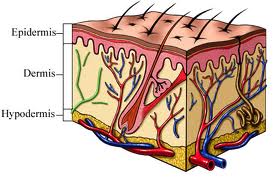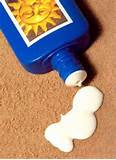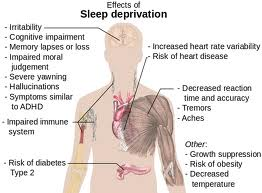What is Skin????

Skin is the soft outer covering of vertebrates. Other animal coverings such as the arthropod exoskeleton have different developmental origin, structure and chemical composition. In mammals, the skin is the largest organ of the integumentary system!!!!(The integumentary system is the organ system that protects the body from various kinds of damage) made up of multiple layers of ectodermal tissue, and guards the underlying muscles, bones, ligaments and internal organs. Skin of a different nature exists in amphibians, reptiles, and birds.All mammals have some hair on their skin, even marine mammals which appear to be hairless. The skin is one of the most important parts of the body because it interfaces with the environment and is the first line of defense from external factors. Its other functions are insulation, temperature regulation, sensation, and the production of vitamin D folates. Severely damaged skin may heal by forming scar tissue. This is sometimes discoloured and depi...







